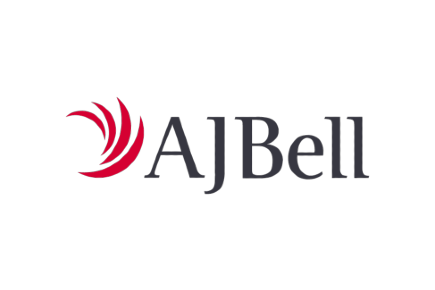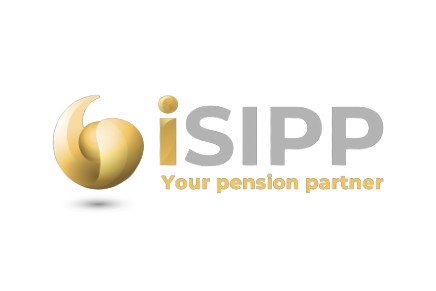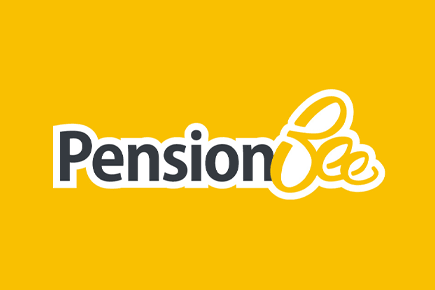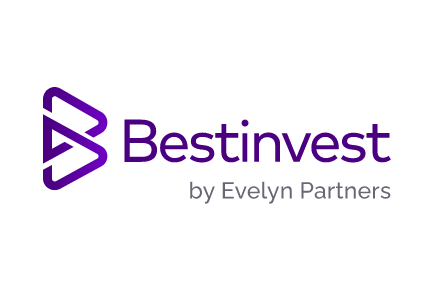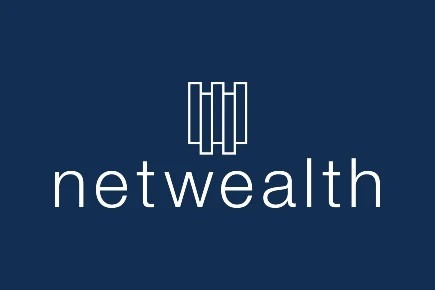As a director of your own limited company the onus is on you to organise and manage your own pension in the most tax efficient way. I am going to show you how, when done correctly, a directors pension can earn tax relief twice, once on your personal pension contributions, and once on your company pension contributions.
Contributing to a pension through your limited company is an allowable business expense which can help to reduce your company’s corporation tax bill and provide a tax efficient means of extracting profits from the business.
Also consider: Find the best private pension uk
The top company director pension providers for July 2025
Here is my list of the best company director pension providers in the UK. Please review each provider before making a decision on which one is best for your needs.
Top pensions providers for company directors
- Set up in minutes, top up and combine in a few quick taps
- Contribute as much or as little as you like, as often as you like
- Fees: 0.75% up to £100k – 0.4% over £100k
Capital at risk.
- Open a SIPP alongside your existing pensions
- Transfer in and manage everything in one online account
- Low costs – 0.25% annual custody charge
Capital at risk.
- Best for Contractors
- Investment Options: DIY & Ready-made
- 20 years’ experience as pension administrators
Capital at risk.
- SIPP costs £12.99 a month
- Free to join and free to leave
- Trading costs: £7.99 for UK shares and ETFs, funds, investment trusts and US shares
Capital at risk.
- Best for the company directors and self-employed
- Contribute as much or as little as you like, as often as you like
- Fees: 0.28% up to 0.95%
Capital at risk.
Capital at risk
- Readymade portfolios available
- Invest in 3,000+ funds, shares and ETFs
- Open a new SIPP or transfer your pension
Capital at risk.
- Investment Options: DIY & Ready-made
- Annual Fee: 0.1% – 0.45%
- Min. Investment: £100 lump-sum or £25 a month
Capital at risk.
- Investment Options: Ready-made
- Annual Fee: 0.35% – 0.75%
- Min. Investment: £500
Capital at risk.
- Free consultation with qualified adviser – to maximise your retirement potential
- Consolidate your pensions into a cost-effective, fully managed and flexible personal pension
- Get the best of tech + an expert team to get the retirement you deserve
Capital at risk.
How to make company director pension contributions
There are two ways to claim pension tax relief when you are making pension contributions as a company director.
- Make personal pension contributions
- Make pension contributions through your limited company
You can choose to make contributions using one, or both of these methods.
Contribution limits for tax relief
Regardless of how you contribute towards your pension, the limits for tax relief remain the same.
The limit for tax relief is £40,000 or 100% of your salary, whichever is lowest.
This is tapered should you earn over £150,000 by £1 for every £2 you earn.
Tapering is capped at £30,000. Therefore, if you earn over £210,000, your annual allowance would be £10,000.
There is also a lifetime allowance of how much you can save into a pension without getting a tax charge. This is currently £1,078,900 and will be frozen at this amount until 2026.
Tax relief when making personal pension contributions
When making pension contributions from your salaried income, tax relief is calculated at your income tax level. Basic rate taxpayers will receive an additional 20% in tax relief – which means if you were to make a contribution of £100, you would effectively be saving £125 into your pension.
There are no limits on the amount you can pay into your pension, however the tax relief is only available on 100% of your income, up to £40,000.
For pension savers with no income or earning less than £3,600, this limit is reduced to £3,600 inclusive of the government tax relief.
Tax relief when making personal pension contributions as the director of a limited company
Take both salary and dividends? Then the dividends don’t count as ‘taxable income’ and therefore only the amount you take as salary will count towards your pension tax relief limit. Therefore, if your salary is low, your pension tax relief limit will also be low.
There are ways around this, the most obvious being to increase your salary. However, the more tax efficient way around this would be to make your pension contributions straight from your company as an employer contribution.
Tax relief when making employer pension contributions from your limited company
Of course if you are paying yourself a small salary and taking the bulk of your income in the form of dividends in order to mitigate your exposure to tax, then you may be looking for ways to increase your pension tax relief limit past 100% of your salary. This is where your company can boost your pension contributions beyond the PAYE cap up to the £40,000 annual limit as this cap is not applicable to company pension contributions.
Contributions made through your limited company are also deemed an allowable business expense which means these contributions can be offset against your corporation tax, saving your company up to 19%.
The other benefit is that your limited company won’t have to pay National Insurance on pension contributions which can save you an additional 13.8%
This adds up to a total tax saving of 32.8% when paying into a pension straight from your limited company.
It is worth bearing in mind that pension contributions from your limited company should never exceed your company’s income for that year as this could raise questions with HMRC.
Why dividends?
As a limited company director there are two ways that you can extract income from your company. You can either pay yourself an income in the form of a salary, or you can pay yourself in dividends.
A dividend is basically the remaining money once your company has paid all its business expenses, liabilities and outstanding taxes. Dividends are not subject to National Insurance Contributions and are also taxed at a lower rate than a salary which makes them the most tax efficient way to pay yourself as a company director.
Most company directors will pay themselves a salary up to £8,840 in order to fall within the personal allowance below the point at which your company will pay Employers’ National Insurance Contributions.
Anything over the personal allowance of £12,570 will attract income tax at your marginal rate of 20% to 45%. It then makes financial sense to take the rest of your income in the form of dividends.
National Insurance Contributions are not payable on dividend income, which can save company directors 13.8% on their tax bill.
Remember, dividends are not classified as ‘relevant UK earnings’ and therefore your pension tax relief limit is based on the amount you take as salary. This could mean your tax relief limit is low.
How much can a limited company pay into a directors pension?
Your company can pay as much into your pension as you see fit within your company’s annual income, however, the tax relief will only be applicable to the first £40,000. Anything over and above this amount will generate a tax bill.
The exception to the rule is when you haven’t contributed your full allowance in the previous three years, in which case any amount left over can be carried forward provided you’ve been part of a registered pension scheme within this time.
There is also the lifetime allowance to be aware of, which currently stands at £1,055,000
Should I Contribute via my Limited Company?
Yes, the PAYE limit on tax relief for contributions can be an issue if you are paying yourself mostly through dividends. The 100% is not applicable to limited company contributions and you can therefore contribute up to the maximum £40,000 regardless of your salary. The other benefit is the corporation tax relief of 19% and the added bonus of relief on National Insurance.
When Can You Withdraw Your Personal Pension?
A pension can be accessed when you turn 55 and not before, removing the temptation to dip into your retirement savings. However, the UK government has plans to extend this to 57 in 2028 so people saving for their pensions today may want to factor this into their plans.
The exception to this is the state pension which cannot be accessed before the age of 66. Once you reach the state pension age you will qualify for £179.60 a week at the top end of the scale.
If you are not sure if you are financially viable enough to stop working entirely, then we would recommend that you seek financial advice.
Types of pensions available to company directors
The following pensions are all available to you as a company director and you can make personal contributions, as well as company contributions.
Personal Pension
A personal pension is a pension that you arrange and manage yourself. This can be in addition to a workplace pension or as a stand-alone product. There are three main types of personal pension which include:
1. Traditional personal pension
A traditional personal pension allows you to invest in your own pension account and make personal and company contributions. These schemes are the most basic of the available accounts because you typically only have two investment options: insurance company funds and cash.
2. Stakeholder pensions
Stakeholder pensions also allow you to make both personal and company contributions. As with SIPP products, you have more options than just your insurance company’s fund offerings, but your choice is limited in comparison to SIPP products.
One of the biggest differences from a SIPP product is that the UK government regulates the minimum standards, which means the barrier to entry is lower. As a result, you’ll find:
- Limited charges
- No transfer charges (in or out)
- Low minimum contributions
- Flexible contributions
- Default investment options
The default investment option is the biggest difference compared to the SIPP product. A SIPP requires you to make your own choices, but a stakeholder pension gives you a default fund if you decide not to choose.
3. Self-Invested Personal Pension or SIPP
A Self Invested Personal Pension is a financial product that makes it easy for you to choose your own investments within your personal pension fund. These products allow you to choose your investments as you see fit, without the limitations of a traditional personal pension or a stakeholder pension. Traditionally SIPPs required a sound knowledge of the investment market in order to grow your pension for your retirement. However, with the emergence of online platforms, SIPP products have become more mainstream and now cater to investors of all abilities.
The investments available to you through most Self Invested Personal Pension products include:
- Unit trusts
- Investment trusts
- Open-ended investment companies (OEICs)
- Exchange-Traded funds (ETFs)
- UK shares
- Overseas shares
- UK bonds (and other fixed-interest securities)
- Permanent interest-bearing shares (PIBS)
- Cash
Although you do have many options, it’s worth noting that you can also choose ready-made portfolios if it best suits your needs or level of investment knowledge.
Read more: The most important pros and cons of investing in SIPPs
What are the Tax Benefits of a SIPP Product?
Self Invested Personal Pensions work the same way as any other personal pension. You can make personal contributions and company contributions. The UK government pays 20% in through pension tax relief for a basic rate taxpayer on personal contributions. If you are a higher rate taxpayer in the 40% income tax bracket, then you can claim back more tax relief on your income tax return. Additionally, your money grows without the need to pay UK income tax or capital gains tax on your personal pension income.
Contributions via your limited company are still considered allowable business expenses and therefore get tax relief in the form of corporation tax as well as National Insurance Contributions.
What is an Insurance Company Fund?
Most personal pensions are offered by insurance companies, which is what limits their investment product portfolio. As a result, you invest in insurance policy funds.
Insurance company funds are those run by life insurance companies. You might have the offer of a fund run by the insurance company that offers the pension or the chance to invest in funds run by other managers.
As with all funds, your money is pooled.
How does an insurance company fund differ from insurance? Your fund is a financial instrument that fluctuates with the market and according to your preferred investment strategy. Insurance policies and their benefits do not.
For example, if you buy a life insurance product, then you will receive the benefits as stated according to your plan. They will not (or should not) change. An insurance policy fund in a pension product depends on market performance.
How to start a company director pension
A personal pension will give you all the options and flexibility you need when saving for your retirement as a company director and the great news for a busy company director is that they take mere moments to set up and you can make both employer contributions and personal contributions. If you have previously worked for another company and qualified for auto-enrolment then it is possible that you may also have existing workplace pensions which could be consolidated into your new pension plan.
Remember that your pension will need to be invested in order to help it grow towards providing for your future. If you are an experienced investor then you will no doubt know your way around the stock market and already have a fair idea of how you would like to invest your pension funds. In this instance there are a number of personal pension providers who will allow you to pick and choose your own investments.
Get a FREE Pension Review
Get a free no obligation pension review today from a qualified financial adviser.
Our partner Unbiased will connect you with one of over 27,000 FCA-regulated advisers.
For people who have little or no experience with investing, there are other options that can support you through the process and you may want to consider selecting a provider that will match you with a ready-made fund that is expertly managed in order to maximise your gains, whilst remaining within your risk profile.
Of course with both these options come associated costs which you will need to take into consideration before you choose your provider. The good news is that there is plenty of competition between providers, meaning you can shop around to find the best pension provider for you.
You may choose to leave all this in the hands of a financial advisor, in which case you should go to our guide on How to Find a Local Financial Advisor.
How to choose your pension provider
There is so much choice when it comes to pension providers, all of whom are competing for your business. So how do you choose the best possible provider for your circumstances? Here are some tips on how to make your selection.
Cost – With all providers there are associated costs, and these can soon start to eat away at your gains if you don’t pick the right pricing structure for your pot. Generally speaking, if you are just starting your pension, with a small amount of money, then you will probably pay less in costs with a percentage fee rather than a fixed fee. Larger pots can start to cost a lot in fees with a percentage structure and may be more suited to a flat monthly fee. Also look for providers who reduce the percentage fee as your pension pot grows, or alternatively make plans to switch providers once your pot has reached a certain amount.
The account fee is not the only cost to be aware of, and these ‘hidden costs’ can soon start to add up. Potentially one of the most significant costs to you is the price for buying and selling shares. This can range from zero commission trading to £11.95 per trade so is certainly a consideration. Of course the impact to you personally will depend on how many times per month you are likely to trade.
You should also make sure you are aware of any fees for transferring funds in and out of your pension as well as the FX rate if you intend to buy shares outside of the UK.
Minimum Contributions – Ensure you can afford the minimum contributions as well as the starting amount. This can be as little as £1 for some providers whilst other providers will require substantial amounts to get you started. As a limited company director you may want to contribute more some months than others in line with your changing profits. Therefore it is also worth checking that the provider you are considering is flexible with contributions.
Investment Options – Each person’s requirements for investment options will differ depending on their investment style and expertise. Complete novice investors would be better off selecting a platform with a good range of managed funds to pick from so someone else can do all the hard work for you. However, seasoned investors will want a good range of stocks, shares, ETFs and funds with which to create a diversified portfolio. This group will also need to be aware of the cost of buying and selling shares.
What are the best pension schemes for a company director?
With a personal pension you can either open a brand new pension, or you can consolidate your existing pensions into one easy to manage pot.
Get a FREE Pension Review
Get a free no obligation pension review today from a qualified financial adviser.
Our partner Unbiased will connect you with one of over 27,000 FCA-regulated advisers.
Best personal pension providers for experienced investors
| Provider | Account Fee | Buying and selling shares | Fractional shares? | FX rate | Transfer out fee |
|---|---|---|---|---|---|
| Freetrade | £9.99 pcm | FREE | Yes | Spot rate +0.45% | FREE |
| Hargreaves Lansdown | 0.45% | £11.95 | No | Spot rate + 1% | FREE |
| Interactive Investor | £12.99 pcm | £7.99 | No | Spot rate + 1.5% | FREE |
| AJ Bell | 0.25% | £9.95 | No | Spot rate + 1% | £9.95 |
Best personal pension providers for ready made funds
| Provider | Platform Fee | Fund Cost | Transfer Out |
|---|---|---|---|
| Pension Bee | 0.5% – 0.95% | 0.03% transaction cost | FREE |
| Penfold | 0.75% | FREE | FREE |
| Moneybox | 0.45% | 0.13% – 0.25% fund provider cost | FREE |
| Moneyfarm | 0.75% | 0.2% fund fee | FREE |
One of the major issues with being self employed is the lack of spare time, and therefore you might want to consider a personal pension provider that is quick and easy to set up, and can manage your investments for you with minimal intervention on your part.
Also read: Best Personal Pensions for Self-Employed


